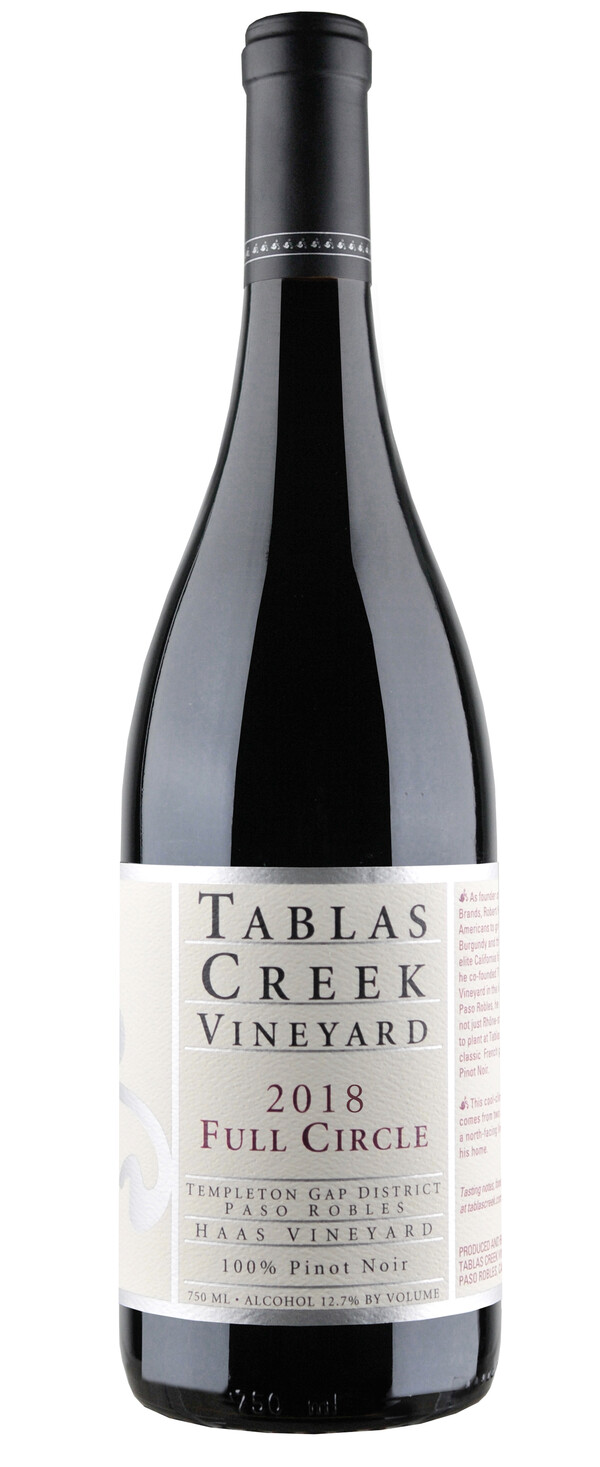
2018 Full Circle Pinot Noir
It looks like there was a problem contacting the store. Please try reloading your browser. If the problem persists try contacting us at orders@tablascreek.com
2018 is the ninth vintage of our Full Circle Pinot Noir, grown on the small vineyard outside the Haas family's home in Templeton, in the cool (for Paso) Templeton Gap AVA. Its name reflects Robert Haas's career: from a start introducing America to the greatness of Burgundy, through decades focusing on grapes from the Rhone, one of his last acts was to plant Pinot at his home and oversee our first few vintages.
Tasting Notes
A pretty nose of cherry cola, Chinese five spice, teriyaki, and black tea. The mouth is medium-bodied, soft, and generous, with raspberry fruit, a little sweet oak, and a lightly tannic finish with sarsaparilla and wild strawberry notes. Drink now and over the next decade.
View tasting notes on the Tablas Creek YouTube page: 2018 Full Circle: A Pinot Noir Tasting with Chelsea and the Shepherd.
Technical Details
Appellation
- Templeton Gap Paso Robles
Technical Notes
- 12.7% Alcohol by Volume
- 475 Cases Produced
Blend
- 100% Pinot Noir
Recipes & Pairings
Recipe Suggestions
Food Pairings
- Roast pork loin
- Veal
- Roasted Chicken
- Spicy sausages
Production Notes
This Pinot Noir comes from the 2.5-acre vineyard around founder Robert Haas's house in Templeton. The Templeton Gap has long been recognized for its marine influence and resulting microclimate that is the coolest in the Paso Robles AVA, and the Haas Vineyard is in one of the coolest pockets of Templeton, near Santa Rita Creek. This vineyard is farmed organically by the Tablas Creek Vineyard team.
The 2018 vintage saw an almost ideal balance of vine health and stress, as is often the case with the first dry year after a very wet one. Although rainfall was just 70% of normal, the rains came late, delaying the onset of bud-break and the beginning of the growing season. The cool weather continued most of the year, punctuated by a six-week heat wave in July and early August. But temperatures moderated before picking began, and harvest proceeded under slightly cooler than normal conditions, allowing us to pick without stress and producing fruit (and wines) with intense flavors and good balancing acidity.
The grapes were fermented in one-ton microfermenters, half de-stemmed and half with stems for a more savory profile, punched down twice daily by hand. After pressing, the wine was moved into year-old Marcel Cadet 60-gallon barrels for a hint of oak. The wine stayed on its lees, stirred occasionally, for 10 months, before being blended and bottled in August 2019. We've aged the wine in bottle for an additional year since then.